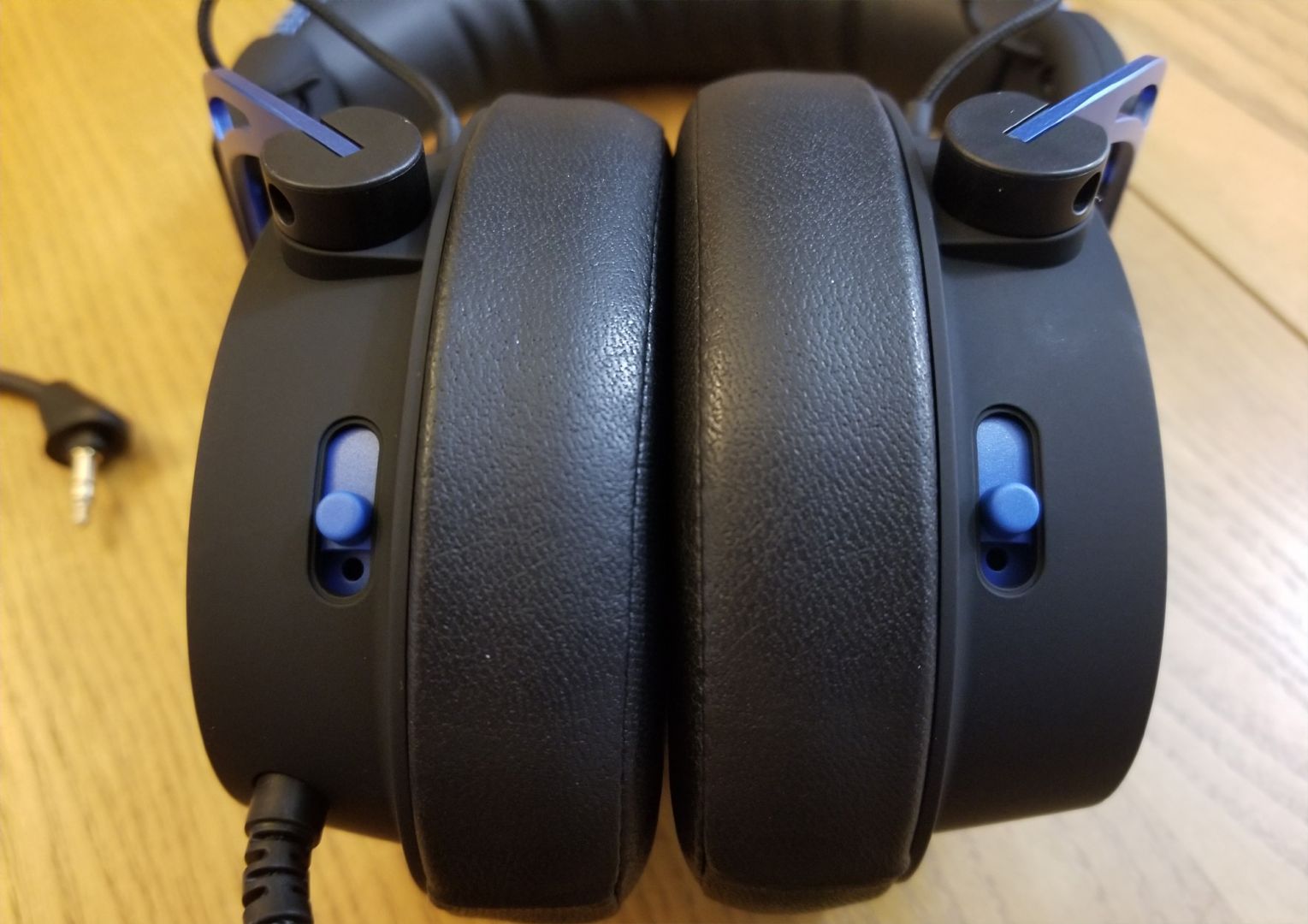

HyperX continues to evolve its headset line-up with its recently released gaming headset, the Cloud Alpha S. After having reviewed six other audio/microphone devices in the HyperX arsenal (the Cloud Stinger, the Cloud Revolver S, the Cloud Flight Wireless, the Cloud Stinger Wireless, the Cloud MIX Wired, and the Cloud Earbuds), I was delighted to find that HyperX has once again managed to carve out a unique identity for the Alpha S, just as they have for every other prior peripheral.

While many of HyperX’s most recent headsets have focused on mobile gaming/devices (whether that meant wireless technology, bluetooth functionality, or the minimalist earbuds structure), the Alpha S is a return to HyperX’s PC gaming roots. Building upon the Cloud Alpha’s framework of a dual chamber system (one for bass, one for mids and highs), the Alpha S adds on a special audio control mixer, which we’ll touch upon shortly.
Structurally, the Alpha and Alpha S look quite similar, with the same sturdy metal frames, soft leatherette-encased memory foam earcups/headband, detachable noise-cancelling microphone, and braided cable that extends about three feet to terminate in a 3.5mm jack. This makes the Alpha S compatible with any system or device that uses that type of connection, like a phone or a PS4. The biggest difference, however, is that while the Alpha’s 3.5mm jack could plug into another braided cable to convert into two 3.5mm audio and microphone plugs, the Alpha S plugs into an audio control mixer whose cable extends to end in a USB plug. This mixer is somewhat similar to the Cloud Revolver S’s mixer, since both possess a surround sound button. The other usual suspects are located on the mixer as well: volume up and down buttons on the front, microphone mute button on the side, and even a shirt clip on the back.

The Alpha S’s mixer doesn’t just let you tweak your sound settings and add 7.1 surround sound, though. It features a unique chat/game audio balancer. Rather than having to set these individually on your computer, you can just push either the game volume button or the chat volume button and the associated applications will get louder while the non-associated applications will get quieter. Once you have it correctly set up, in technical terms it’s “pretty darn nifty.” While I’m sure this kind of functionality has existed before in other gaming headsets, I’ve never come across it myself and it’s a first to HyperX’s headset line-up. I’m a big fan and when I review future headsets, I’m sure I’ll miss this feature. As someone who is constantly using voice chat programs when I play games with friends, it’s so convenient to be able to tap a button a couple of times while I’m in-game when someone is being quieter than usual on Mumble.
As much praise as I’m heaping upon the mixer, I do have to mention it was a bit troublesome to set up. When the headset is plugged into a computer, the computer is treating it as two separate devices: “HyperX Cloud Alpha S Chat” and “HyperX Cloud Alpha S Game.” The instruction manual walks users through setting the Default Communications Device to the Chat device and the Default Device to the Game device, which I did with no problem. The issue I ran into, however, was that my games and voice chat programs had some trouble locating these devices. After updating the firmware, contacting HyperX support, and a lot of trial and error, I finally got it sorted out. For future users, I recommend downloading the firmware, unplugging the headset, setting up the devices as indicated, restarting the computer, making sure your computer has set up the drivers correctly, and THEN setting the correct device in your games and chat programs. It was a bit frustrating, though the end result was worth it.
Sound mixer quality-of-life improvements aside, the sound quality of the Alpha S is stellar. The bass, mid, and high tones sound crisp and distinct from each other, and the 7.1 surround sound option is immersive. Since the headset is a USB headset when plugged into the mixer, note that it does have that USB sound “flavor” as opposed to analog sound. While I personally have no strong preference between the two, those who do will want to take note of that.
The microphone also displays the high quality I’ve come to expect from HyperX headset microphones. Once I got the device functioning, I didn’t need to do any tweaking of the volume whatsoever. I switched from the Cloud MIX headset, and my friends found the Alpha S’s microphone to be slightly clearer and closer to my in-person voice. I didn’t have any issues with ambient noise or overly quiet mic (which Nick did in his HyperX Cloud Alpha impressions), which makes me think that the Alpha S improved vastly upon the Alpha’s mic.
HyperX has another hit on its hands with the Cloud Alpha S. It ticks all the usual boxes of comfort, audio quality, and microphone quality while offering something innovative and functional in the chat/audio mixer. At $129.99, it ends up being in the middle of the HyperX headset price range, which feels fair for what you get. For non-wireless PC gaming, this is the headset I’d recommend if it’s in your budget. That recommendation used to go to the Revolver S, but the Alpha S flat-out replaces it for me. PC gamers on a tighter budget might want to consider the Stinger instead ($49.99), whereas console gamers (and PC gamers who want a wireless option) should check out the Cloud Flight ($139.99).